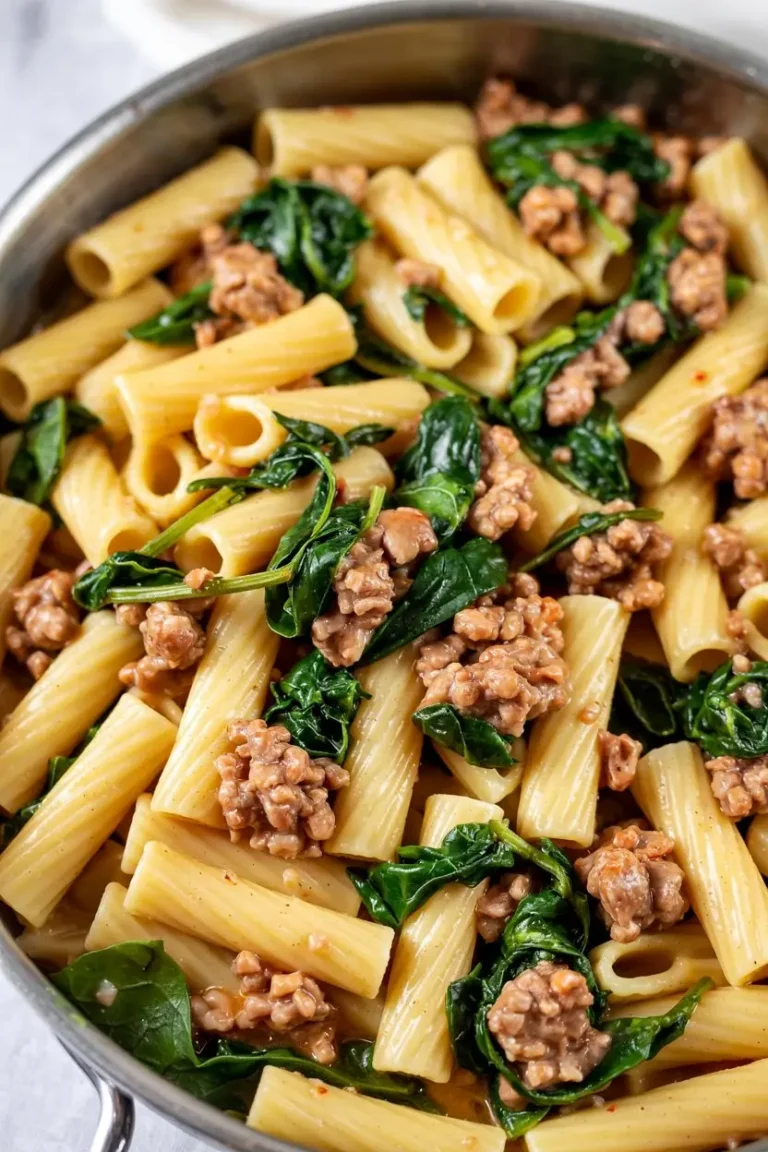I still remember the first time I made meatballs from scratch. I thought it would be simple, a classic for a reason. The result? Little gray rocks that could have probably broken a window. They were dry, tough, and completely forgettable.
It took a lot of trial and error, and a few tips from my grandmother, to figure out the secret. It wasn’t about a complicated recipe. It was about technique and respecting the ingredients.
This recipe is the culmination of that journey. These Parmesan Meatballs are incredibly tender, packed with savory flavor, and so juicy they practically melt in your mouth. They are the meatballs that will make your family ask for seconds, and thirds.
Forget everything you think you know about difficult or dry meatballs. We’re going to make something truly special today, and I promise, it’s easier than you think.
What You’ll Need
The magic is in the combination of simple, high-quality ingredients. Don’t be tempted to skip the fresh parsley or use pre-grated cheese; the details make all the difference here.
- 1 lb ground beef (80/20 is ideal)
- 1/2 lb ground pork
- 1 cup freshly grated Parmesan cheese (plus more for serving)
- 1 cup Italian breadcrumbs
- 1/2 cup whole milk
- 2 large eggs, lightly beaten
- 1/2 cup finely chopped yellow onion
- 3 cloves garlic, minced
- 1/4 cup chopped fresh parsley
- 1 teaspoon salt
- 1/2 teaspoon black pepper
- 1/4 teaspoon red pepper flakes (optional)
- 2 tablespoons olive oil, for frying
Pro Tips
Over the years, I’ve picked up a few non-negotiable rules for perfect meatballs. These are the little things that separate good meatballs from great ones.
- Don’t Overwork the Meat: This is the number one meatball sin. Mix the ingredients until they are just combined. Overmixing develops the proteins in the meat, resulting in tough, bouncy meatballs instead of tender, delicate ones. Use your hands, and be gentle!
- The Panade is Your Best Friend: A “panade” is simply a mixture of a starch (breadcrumbs) and a liquid (milk). Soaking the breadcrumbs in milk before adding them to the meat mixture is crucial. This paste adds moisture and keeps the meatballs incredibly tender during cooking.
- Fresh is Always Best: Use freshly grated Parmesan cheese from a block. The pre-grated kind in a canister often contains anti-caking agents that prevent it from melting smoothly and can give a gritty texture. The flavor of a fresh block of Parmigiano-Reggiano is also vastly superior.
- Get a Good Sear: Searing the meatballs in a hot pan before they finish cooking (either in the oven or in sauce) is key. This creates a delicious, caramelized crust on the outside, a process known as the Maillard reaction, which adds a deep, savory flavor that you can’t get from just baking or simmering alone.
Tools Required
You don’t need any fancy equipment for this recipe. Just a few kitchen basics will do the trick.
- Large mixing bowl
- Small bowl (for the panade)
- Large skillet (cast iron works great)
- Measuring cups and spoons
- Knife and cutting board
- Tongs
- Baking sheet (if you choose to bake them)
Substitutions and Variations
This recipe is a fantastic starting point. Feel free to play around with it to suit your tastes or what you have on hand.
| Original Ingredient | Substitution / Variation | Notes |
|---|---|---|
| Ground Beef/Pork | Ground turkey or chicken | Use dark meat for more flavor and moisture. |
| Parmesan Cheese | Pecorino Romano or Asiago | Pecorino is saltier, so you may need to adjust the salt. |
| Italian Breadcrumbs | Panko breadcrumbs or crushed crackers | Panko will create a slightly lighter texture. |
| Whole Milk | Buttermilk or a non-dairy milk | Buttermilk adds a nice tang. |
| Fresh Parsley | Fresh basil or a mix | Adds a different, fresh herbal note. |
Make-Ahead Tips
These meatballs are perfect for meal prep. You can prepare them ahead of time to make dinner a breeze on a busy night.
Uncooked: Mix and roll the meatballs, then place them on a baking sheet lined with parchment paper. Cover with plastic wrap and refrigerate for up to 24 hours before cooking.
Freezing Uncooked: Place the rolled meatballs on a baking sheet and “flash freeze” them for about 1-2 hours, or until solid. Transfer the frozen meatballs to a zip-top freezer bag. They can be stored in the freezer for up to 3 months. You can cook them from frozen, just add about 10-15 minutes to the cooking time.
How to Make Parmesan Meatballs: Step by Step
Follow these simple steps for flawless meatballs every time.
Step 1: In a small bowl, combine the breadcrumbs and milk. Stir them together and let the mixture sit for about 5-10 minutes. This allows the breadcrumbs to fully absorb the liquid and become a paste (your panade).
Step 2: While the panade is resting, grab a large mixing bowl. Add the ground beef, ground pork, grated Parmesan, beaten eggs, chopped onion, minced garlic, fresh parsley, salt, pepper, and optional red pepper flakes.
Step 3: Add the soaked breadcrumb mixture (the panade) to the large bowl with the meat and other ingredients.
Step 4: Using your hands, gently mix everything together until just combined. Remember the pro tip: do not overmix!
Step 5: Roll the mixture into balls about 1.5 inches in diameter. An ice cream scoop can help make them uniform in size. You should get about 20-24 meatballs.
Step 6: Heat the olive oil in a large skillet over medium-high heat. Once the oil is shimmering, carefully place the meatballs in the pan, leaving some space between them. You may need to do this in two batches.
Step 7: Sear the meatballs for about 2-3 minutes per side, until they are nicely browned all over. They do not need to be cooked through at this point.
Step 8: At this point, you have two choices. You can transfer the seared meatballs to a baking sheet and bake at 400°F (200°C) for 15-20 minutes, or until cooked through. Alternatively, you can add them to your favorite marinara sauce and let them simmer for at least 30 minutes to an hour to finish cooking and absorb the flavor of the sauce.
Nutritional Info and Dietary Swaps
While these are a treat, it’s good to know what you’re eating. Here are some estimates and ways to adapt the recipe for different dietary needs.
Estimated Nutrition (per meatball, approx.):
- Calories: ~120 kcal
- Protein: ~9g
- Fat: ~8g
- Carbohydrates: ~3g
Here’s a quick guide for common dietary adjustments.
| Dietary Need | Ingredient to Swap | Suggested Swap |
|---|---|---|
| Gluten-Free | Italian Breadcrumbs | Use certified gluten-free breadcrumbs or almond flour. |
| Dairy-Free | Parmesan & Milk | Use a dairy-free Parmesan alternative and unsweetened almond milk. |
| Keto / Low-Carb | Breadcrumbs & Milk | Replace breadcrumbs with almond flour or crushed pork rinds. Replace milk with heavy cream. |
Meal Pairings & Time-Saving Tips
These meatballs are versatile! Serve them simmered in marinara over spaghetti for a classic meal.
They are also fantastic over creamy polenta, stuffed into a sub roll with melted provolone, or served alongside roasted vegetables or zucchini noodles for a lower-carb option.
To be more efficient in the kitchen, chop your onion, garlic, and parsley while the panade is soaking. You can also use a small ice cream or cookie scoop to portion the meatballs quickly and evenly. This ensures they all cook at the same rate.
Leftovers and Storage
Leftover meatballs are a gift! Store them in an airtight container in the refrigerator for up to 4 days. If they are in sauce, they will only get more flavorful overnight.
You can reheat them gently on the stovetop in a saucepan, or in the microwave. They are delicious cold in a sandwich, too!
Frequently Asked Questions
Q1. Why did my meatballs turn out dry and tough?
Ans: This is almost always caused by one of two things: overmixing the meat mixture or using very lean ground meat. Be gentle when combining ingredients, and use an 80/20 ground beef for the best results.
Q2. Can I bake the meatballs instead of pan-searing them?
Ans: You absolutely can. Place the raw meatballs on a baking sheet and bake at 400°F (200°C) for 20-25 minutes. However, you will miss out on the delicious brown crust that pan-searing provides. For the best of both worlds, sear them first and then finish them in the oven.
Q3. Can I use all ground beef?
Ans: Yes, you can use all ground beef if you prefer. The ground pork adds extra fat and a wonderful savory flavor that complements the beef, making the meatballs more tender and complex, but all-beef is still delicious.
Q4. My meatballs are falling apart in the pan. What went wrong?
Ans: This could be due to not having enough binder (the egg and breadcrumbs) or the mixture being too wet. Ensure your panade isn’t watery. Also, make sure your pan is hot enough before adding the meatballs and don’t try to move them too soon. Let them form a nice crust before you try to turn them.
Wrapping Up
There you have it—the path to perfectly tender, wildly flavorful Parmesan meatballs. This isn’t just a recipe; it’s a technique that will change your dinner game for good.
No more dry, disappointing meatballs. Just juicy, savory bites of comfort that will have everyone at the table smiling.
Now it’s your turn. Give this recipe a try and see for yourself. I would love to hear how they turned out for you, so please drop a comment below with your experience or any questions you might have. Happy cooking!





